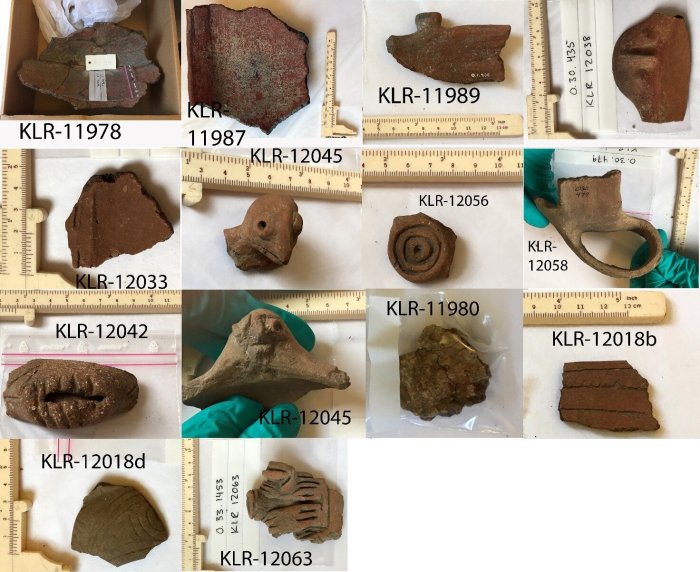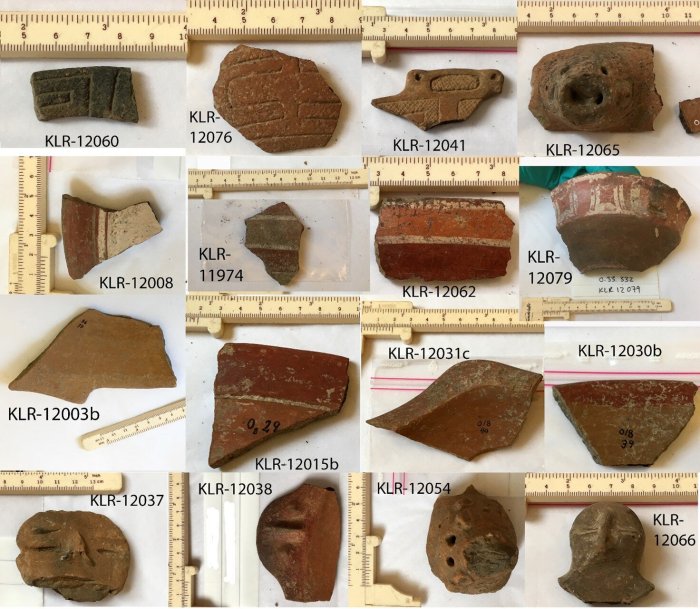Conny Waters – AncientPages.com – When Christopher Columbus arrived at the present-day US Virgin Islands on his second voyage across the Atlantic in 1493, the islands were already inhabited—but how and when the islands of St. Croix, St. John, and St. Thomas were originally populated remains uncertain.

Source
Now, a research team present a chemically-based answer to the puzzle. An international research team from the United States, Argentina, the United Kingdom, and Denmark got permission to conduct the first thermoluminescence dating of archaeologically excavated pottery shards from the islands.
These results can now be compared with archaeologists’ previous datings, which were based on stylistic analysis, site location, and radiocarbon dating. The results have been published in the journal Heritage Science.
“For the first time, we have conducted a thermoluminescence dating of the pottery shards left behind by the islands’ former inhabitants. This provides a more accurate dating of the culture that prevailed on the islands because pottery shards are the most important archaeological artifact group in this warm tropical climate,” says Kaare Lund Rasmussen, a professor at the Department of Physics, Chemistry, and Pharmacy, who led the chemical analyses.
He is an expert in archaeometry, which involves conducting chemical analyses of archaeological and historical objects. He has analyzed high-profile artifacts such as the tomb of Renaissance astronomer Tycho Brahe, the ᴅᴇᴀᴅ Sea Scrolls, the coffin of King Canute the Holy, and the skeletons of Jesus’ apostles.
Selection of the 128 pottery shards, analyzed by Professor Kaare Lund Rasmussen, University of Southern Denmark. Credit: Kaare Lund Rasmussen/University of Southern Denmark.
The pottery shards were made available by the National Museum of Denmark in Copenhagen, which granted the researchers permission to take samples from the ceramic pieces brought to the museum in 1924 from the former Danish colonies in the West Indies. The samples consist of 128 pottery shards from seven different locations on St. John, St. Thomas, and St. Croix.
“These new datings contribute to a more nuanced understanding of when the islands were inhabited and, most importantly, how many different ethnic groups lived on the islands or engaged in trade with each other at the same time,” says Kaare Lund Rasmussen.
Who these early residents were, researchers don’t know much about. Although several archaeological investigations have been conducted on the islands, not many artifacts have been found apart from pottery shards that can contribute to forming a picture of the people who inhabited and settled on the islands.
The new datings challenge the prevailing theory about the early inhabitants of the islands. According to the widely accepted theory proposed by Professor Irwin Rouse from Yale University in 1960, immigrants arrived in three successive waves from the south, originating from the mouth of the Orinoco River in Venezuela.
This theory is plausible and intuitively understandable for several reasons: One can see from one island to the next in the chain (at least in good weather). Furthermore, the almost always prevailing southeasterly wind makes the journey northwest relatively easy.

Selection of the 128 pottery shards, analyzed by Professor Kaare Lund Rasmussen, University of Southern Denmark. Credit: Kaare Lund Rasmussen/University of Southern Denmark
However, Lund Rasmussen’s and co-workers’ thermoluminescence datings have revealed that several different styles coexisted on the islands at the same time.
“Our data suggests that multiple cultures were present in the same location simultaneously or at least in close proximity to each other, enabling them to engage in trade. This contradicts to some extent the theory of three major waves of immigration from south to north. It appears to be more of a mulтιтude of different styles that prevailed simultaneously at almost all locations,” says Lund Rasmussen.
As an example, he mentions that the styles of Ostiones, Monserrate, Santa Elena, La Hueca, and Cuevas, each displaying their own distinctive pottery decoration, have been found at various locations on the three islands within a timeframe that researchers date from 600 to 1200 AD.
“This indicates that these five different ethnic groups may have inhabited these places during the mentioned period. Perhaps not continuously—they may have come and gone, only to return again. But they were certainly within trading distance of each other. It seems that the travels went in multiple directions, both north and south,” explains Kaare Lund Rasmussen.
Until now, datings of archaeological findings on the U.S. Virgin Islands were based on radiocarbon dating of the surrounding materials found together with the pottery shards. For example, radiocarbon dating has been performed on seashells found alongside the pottery shards. The ages of the pottery shards were also estimated based on their decoration and production techniques, placing them in Rouse’s scheme of immigration waves.
“Radiocarbon datings of remains found near pottery shards can generally be helpful for archaeologists. However, the problem in the Virgin Islands is that there are rarely well-defined layers where the overlying layer is clearly and distinctly younger than the underlying layer. In fact, only one site on the islands has a truly good stratigraphy, namely Cinnamon Bay on St. John. The situation at most other locations more closely resembles kitchen middens,” says Kaare Lund Rasmussen.
Currently, the research team is investigating whether the chemical composition of the clay can provide information about where the different pottery vessels were made, potentially determining whether a pottery vessel was locally produced or brought by canoe from another island.
Paper
Written by Conny Waters – AncientPages.com Staff Writer






